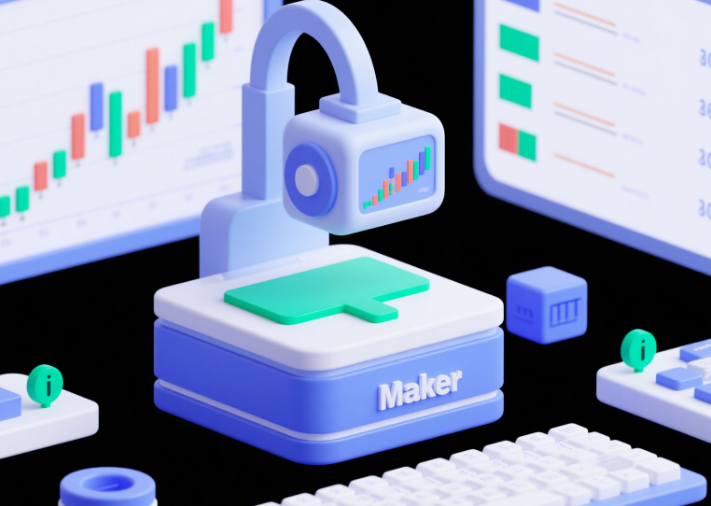In the ever-evolving landscape of decentralized finance (DeFi), Virtual Automated Market Makers (vAMMs) have emerged as a game-changing innovation, reshaping how traders access liquidity and engage with derivative markets. Unlike traditional AMMs, which rely on physical liquidity pools, vAMMs leverage synthetic assets and mathematical algorithms to enable seamless trading of perpetual contracts, leveraged positions, and non-crypto assets. This article explores the mechanics, advantages, and real-world applications of vAMMs, positioning Bitora as your go-to source for cutting-edge insights into this transformative technology.
Understanding Virtual Automated Market Makers (vAMMs)
A Virtual Automated Market Maker (vAMM) is a decentralized protocol that simulates liquidity through smart contracts, allowing traders to execute leveraged trades without relying on traditional liquidity providers (LPs). Instead of locking real assets into pools, vAMMs use synthetic tokens and algorithms to mimic market conditions, enabling price discovery and trade execution entirely on-chain.
Key components of vAMMs include:
- Synthetic Liquidity: Traders deposit collateral (e.g., stablecoins) into a smart contract vault, which generates virtual tokens representing their positions.
- Price Discovery: vAMMs use mathematical formulas (e.g., the Constant Product Market Maker model) to determine asset prices dynamically, ensuring minimal slippage even for large trades.
- Leverage and Margin Trading: Users can amplify their positions using borrowed funds, with vAMMs managing margin requirements and liquidations automatically.
For example, protocols like Tsunami Exchange and Increment Finance utilize vAMMs to offer perpetual futures trading, where traders speculate on price movements without owning the underlying assets .
How vAMMs Differ from Traditional AMMs
While traditional AMMs (e.g., Uniswap, SushiSwap) dominate decentralized spot trading, vAMMs address critical limitations by focusing on derivatives and leveraged products:
| Feature | Traditional AMM | vAMM |
|---|---|---|
| Liquidity Source | Real tokens locked in pools | Synthetic liquidity backed by collateral |
| Trading Focus | Spot trading of cryptocurrencies | Perpetual contracts, leveraged positions, synthetic assets |
| Impermanent Loss | High risk for LPs | Eliminated (no real assets in pools) |
| Capital Efficiency | Low (LPs provide liquidity across all price ranges) | High (concentrated liquidity models optimize capital usage) |
Notably, vAMMs like Voltz Protocol achieve 3,000x higher capital efficiency than traditional models by allowing LPs to provide liquidity within specific price ranges, maximizing returns while minimizing risk .
Core Advantages of vAMMs
1. Enhanced Liquidity and Zero Slippage
vAMMs eliminate the need for pre-funded liquidity pools, ensuring traders can execute large orders without slippage. For instance, Rollup Finance’s vAMM model allows traders to provide liquidity to each other directly, maintaining constant liquidity even during market volatility .
2. Reduced Impermanent Loss
Traditional AMMs expose LPs to impermanent loss when asset prices fluctuate. vAMMs mitigate this risk by using synthetic liquidity, ensuring LPs’ collateral remains untouched while earning fees from trading activity .
3. Diversification Beyond Crypto
vAMMs enable trading of non-crypto assets like stocks, commodities, and NFTs through synthetic tokens. Projects like Tsunami support derivatives on traditional financial instruments, bridging the gap between DeFi and traditional markets .
4. Accessible Leverage
Traders can use leverage to amplify profits (or losses) without relying on centralized exchanges. For example, Alpaca Finance’s vAMM allows users to open leveraged positions using a fraction of the required capital, democratizing access to advanced trading strategies .

Real-World Applications of vAMMs
1. Perpetual Futures Trading
vAMMs power decentralized perpetual exchanges like Perpetual Protocol and dYdX, where traders speculate on price movements without expiration dates. These platforms use vAMMs to manage margin and funding rates automatically, ensuring fair and transparent trading .
2. Yield Farming and Liquidity Provision
vAMMs incentivize LPs with trading fees and governance tokens. For instance, Voltz Protocol’s vAMM allows LPs to earn fees from interest rate swaps while maintaining full control over their collateral .
3. Cross-Chain Trading
Protocols like Hop Protocol use vAMMs to facilitate cross-chain swaps, enabling seamless asset transfers between Ethereum, Binance Smart Chain, and other networks .
Challenges and Risks
Despite their potential, vAMMs face several hurdles:
- Smart Contract Risks: Bugs or vulnerabilities in vAMM code could lead to exploits, as seen in the Hegic Options Protocol hack in 2021.
- Regulatory Uncertainty: Synthetic assets and leveraged products may attract regulatory scrutiny, especially in jurisdictions with strict DeFi regulations.
- Market Manipulation: vAMMs’ reliance on oracles for price data leaves them vulnerable to manipulation, though projects like Chainlink aim to mitigate this risk .
The Future of vAMMs
As DeFi continues to mature, vAMMs are poised to become the backbone of decentralized derivatives trading. Key trends include:
- Concentrated Liquidity: Projects like Uniswap v3 and PancakeSwap v3 are adopting concentrated liquidity models, which vAMMs can leverage to enhance capital efficiency.
- Integration with CeFi: vAMMs may bridge the gap between decentralized and centralized finance, offering institutional-grade trading tools while maintaining decentralization.
- Interoperability: Cross-chain vAMMs will enable seamless trading across multiple blockchains, expanding DeFi’s reach to new users .
Conclusion: Stay Ahead with Bitora’s vAMM Insights
Virtual Automated Market Makers represent a paradigm shift in decentralized trading, offering liquidity, leverage, and diversification at unprecedented scales. As the DeFi ecosystem evolves, understanding vAMMs is crucial for traders, investors, and developers alike.
Bitora is committed to delivering actionable insights into the latest DeFi trends, including vAMMs, perpetual protocols, and cross-chain innovations. Visit Bitora to explore our in-depth analysis, market reports, and educational resources—your gateway to mastering the future of decentralized finance.
Stay ahead with Bitora’s latest insights into decentralized finance.









Leave A Reply